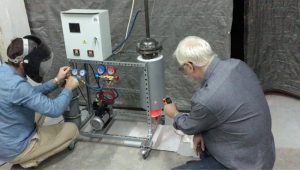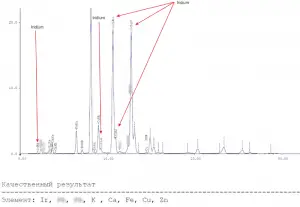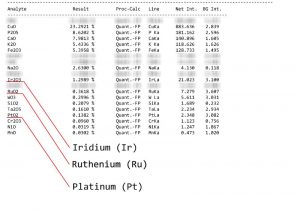The following is a sponsored post that has been submitted by Russian company “Synthestech”
Tasks and results of LENR Transmutation experiments by “Synthestech”
Tasks which Vladislav Karabanov’s research team is facing
The first task was to find a method of manageable and effective implementation of the LENR Transmutation of chemical elements. That is, a transformation of low-value chemical elements into valuable ones. A method that has a perspective of industrial application. The microbiological method of transmutation of chemical elements, was proved, by analysis results, to be unpromising. In biological environments, transmutation cannot be controlled and will not yield significant results in the next 15–20 years.
Therefore, we chose to search for a controlled method of LENR Transmutation. At the end of 2016, the beginning of 2017, we gained a clear understanding of the necessary conditions that allow the Low-energy Transmutation process to occur. We have developed a number of important “know-hows” and have identified the key components that should be included in the process. During this period, we have carried out several hundreds of experiments and more than a hundred of different analyzes of the obtained chemical elements. The analysis of both the original matrix and the substance obtained after the process, was conducted.

Dozens of modifications of the LENR Transmutation reactors have been built and tested. We have developed a combination of reagents and compositions of chemical elements that allowed the process of Low-energy Transmutation to occur. We have determined effective methods of energy impact on the prepared medium with a matrix of the starting chemical elements.
It is necessary to point out that we did not seek to delve into theoretical concepts, but focused on practical experiments and results.
As a result of the carried out LENR Transmutation, according to the developed model, valuable chemical elements of the platinum group (platinum, iridium, palladium, ruthenium, etc.) were recorded in matrices of low-value chemical elements (copper, iron, tin, etc.). Also, the presence of other elements, which did not exist in the initial matrices, was recorded.
Examples of chemical analysis results, conducted in a number of independent laboratories.
Image 1. Spectrogram showing presence of a valuable element (in this case iridium), which was not present in the starting material.

Also, as a result of the LENR Transmutation process, in addition to the above mentioned elements of the platinum group, other chemical elements, that were not present in the initial matrix, were obtained (selenium, germanium, niobium, etc.)
Image 2. Results from another laboratory using other analytical equipment. As a result of LENR Transmutation iridium, platinum, and ruthenium were obtained.

Analyzes were conducted in various laboratories and using various equipment in order to receive versatile data. The results confirmed the occurrence of new elements, among which are chemical elements of the platinum group.
Concerning the Cold Transmutation, the Coulomb barrier and the things alike, I can explain them in the following way. I just want to share it with you.
Imagine that the outer border of an atom is like the walls of a house you live in. People inside the house are like protons. If people try to leave the house chaotically, they will bang against the walls. And in order to get out of the house you have to destroy the walls. That is, to overcome the Coulomb barrier. But in reality, people do not leave their houses breaking down the walls. They go through the door or, in the extreme case, through the window. This door or a window is the way, the tunnel through which the proton exchange takes place. And this is Cold transmutation (LENR Transmutation).
Conclusion
Summing up, the research group “Synthestech” has carried out a successful experimental and research work. The foundation was laid for the further development of the technology for LENR Transmutation of chemical elements. There is a realistic perspective in the foreseeable future, with the appropriate technical and laboratory facilities, to develop an industrial technology for the LENR Transmutation of chemical elements.
Our web site: http://synthestech.com
Vladislav Karabanov
